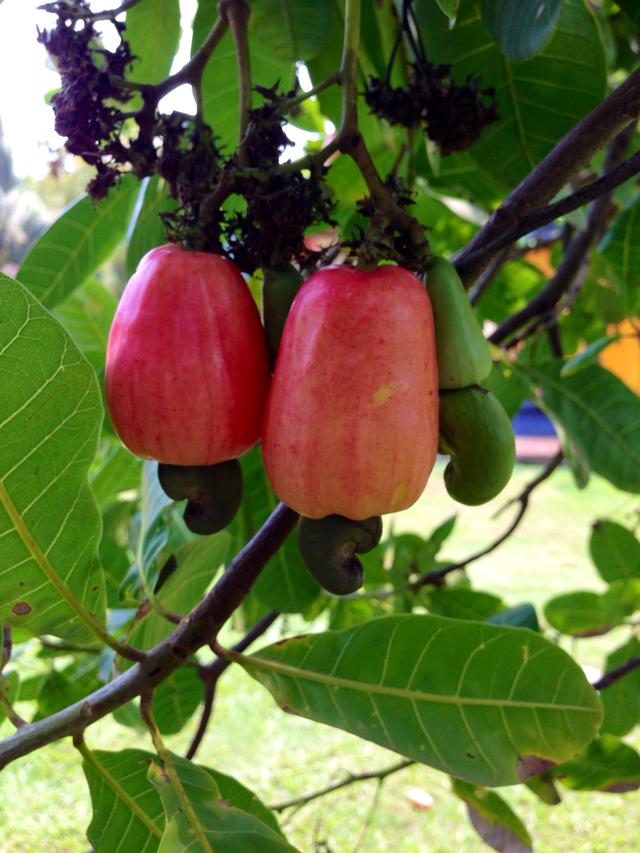The Marañón or cashew tree
(Anacardium occidentale)
The Marañón or cashew tree is a tropical evergreen tree that produces the cashew seed and the cashew apple. It can grow as high as 14 m (46 ft), but the dwarf cashew, growing up to 6 m (20 ft), has proved more profitable, with earlier maturity and higher yields.
The species is originally native to northeastern Brazil. Portuguese colonists in Brazil began exporting cashew nuts as early as the 1550s. Major production of cashews occurs in Vietnam, Nigeria, India, and Ivory Coast.
The cashew nut, often simply called a cashew, is widely consumed. It is eaten on its own, used in recipes, or processed into cashew cheese or cashew butter. The shell of the cashew seed yields derivatives that can be used in many applications including lubricants, waterproofing, paints, and arms production, starting in World War II. The cashew apple is a light reddish to yellow fruit, whose pulp can be processed into a sweet, astringent fruit drink or distilled into liquor.


